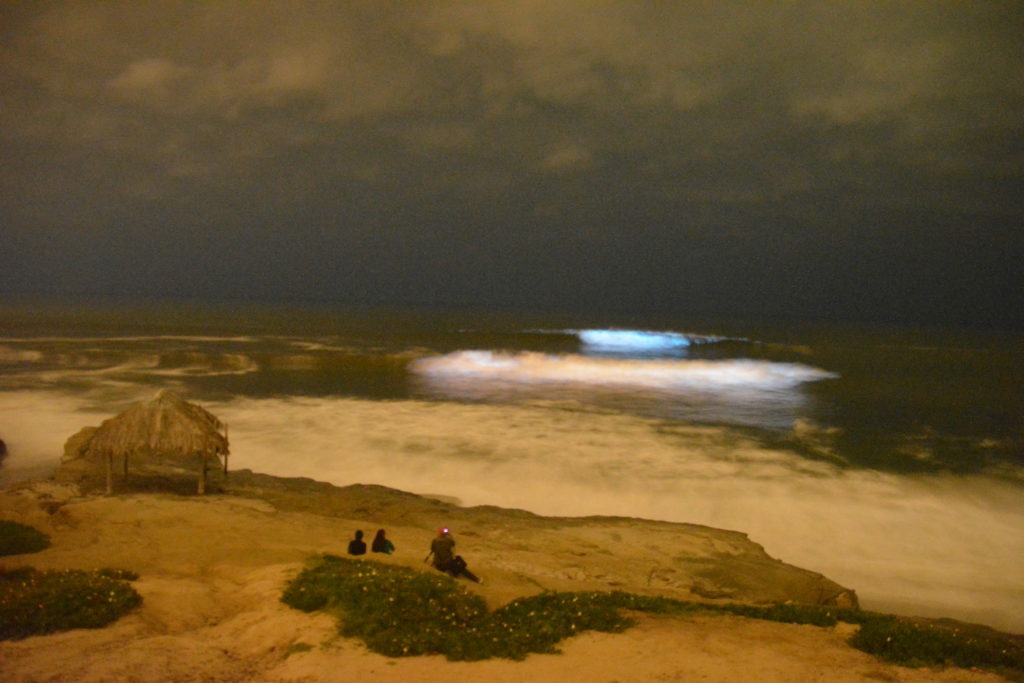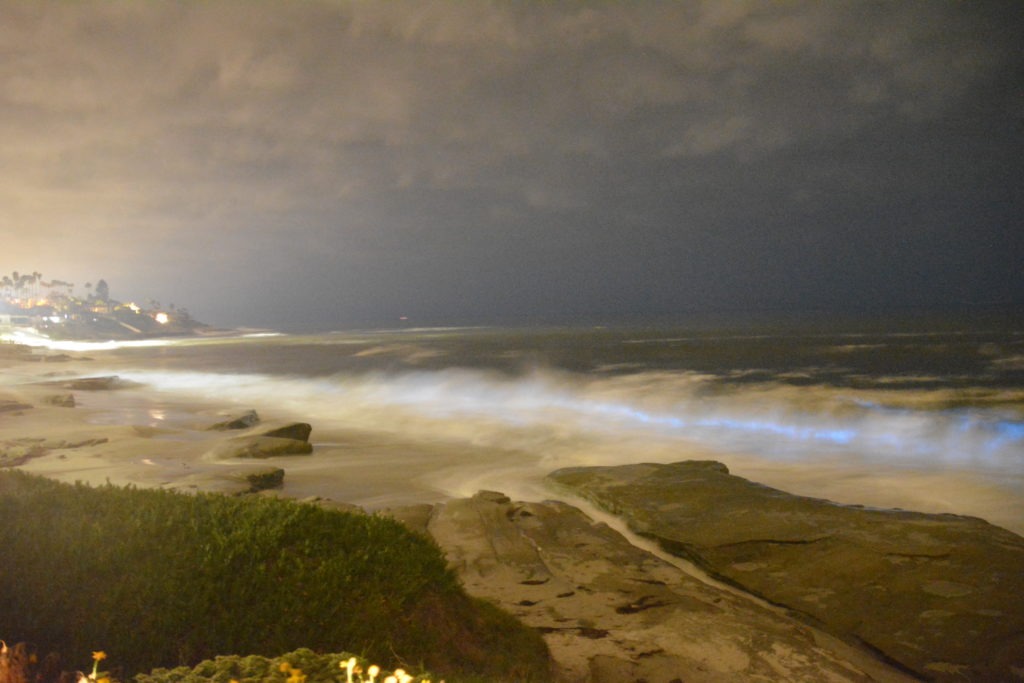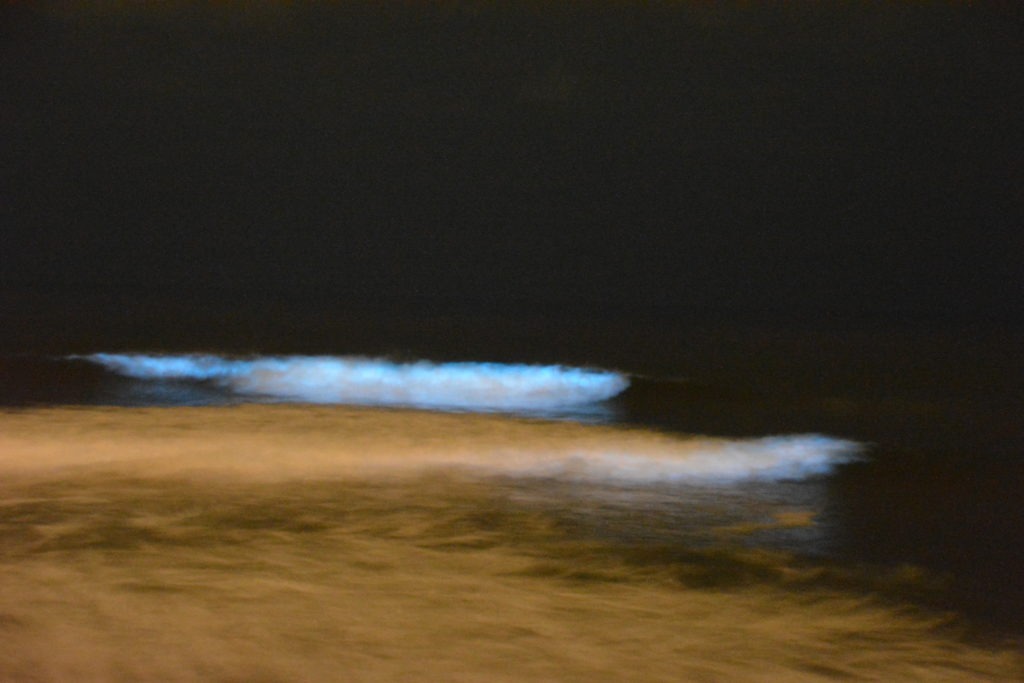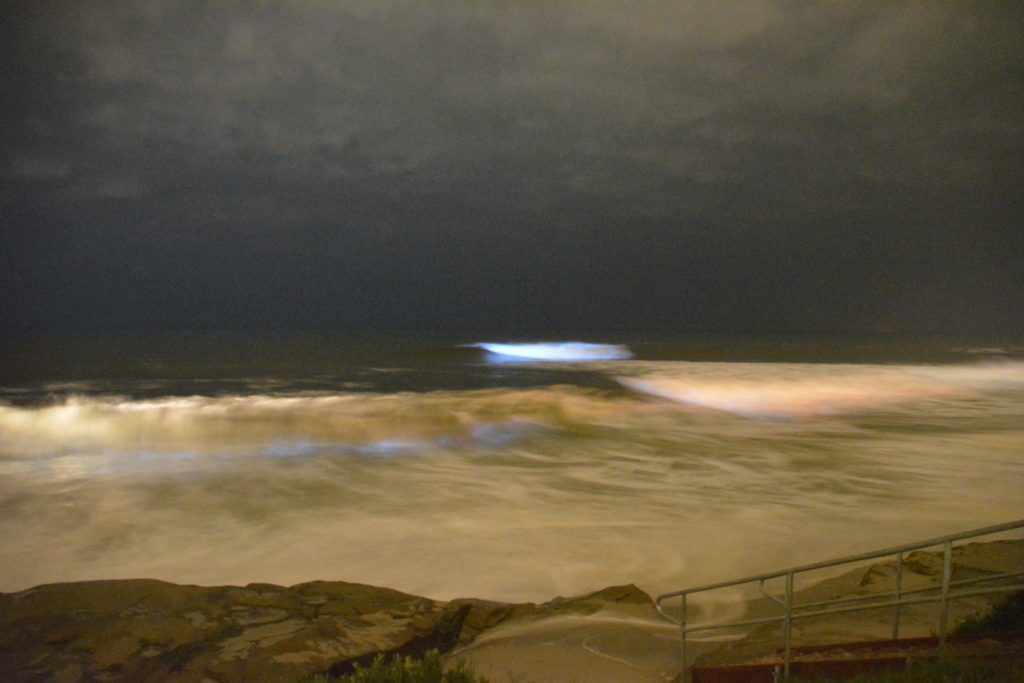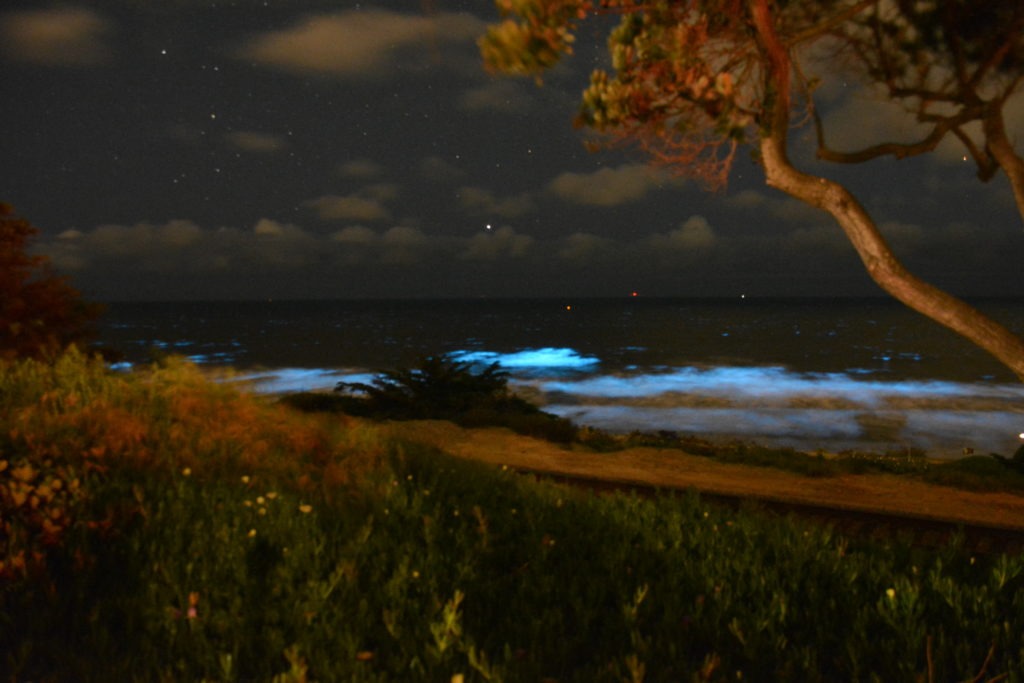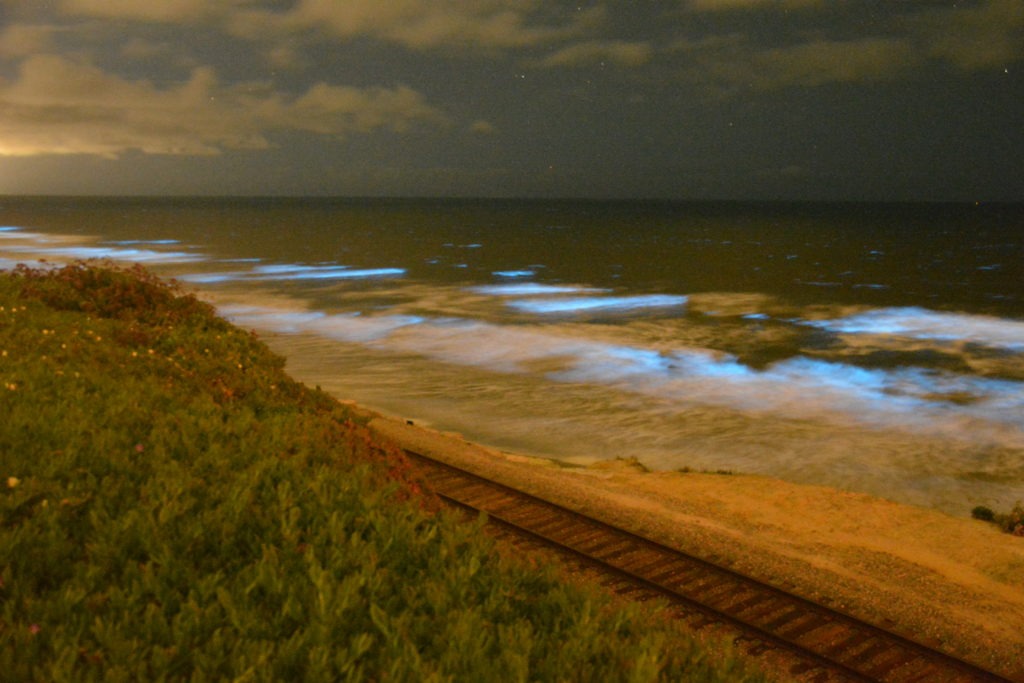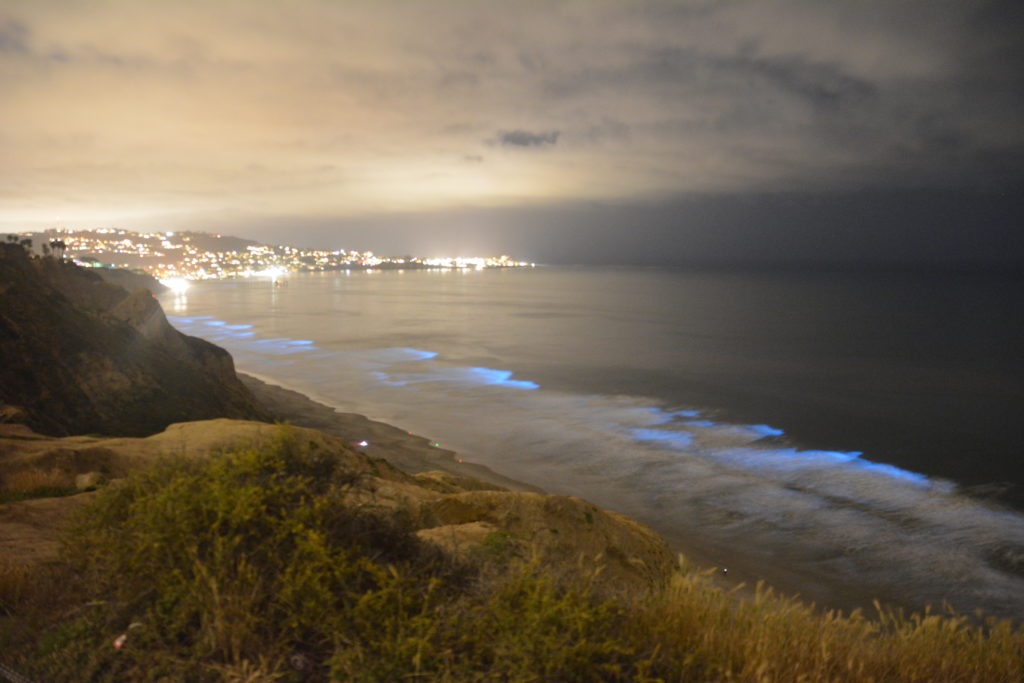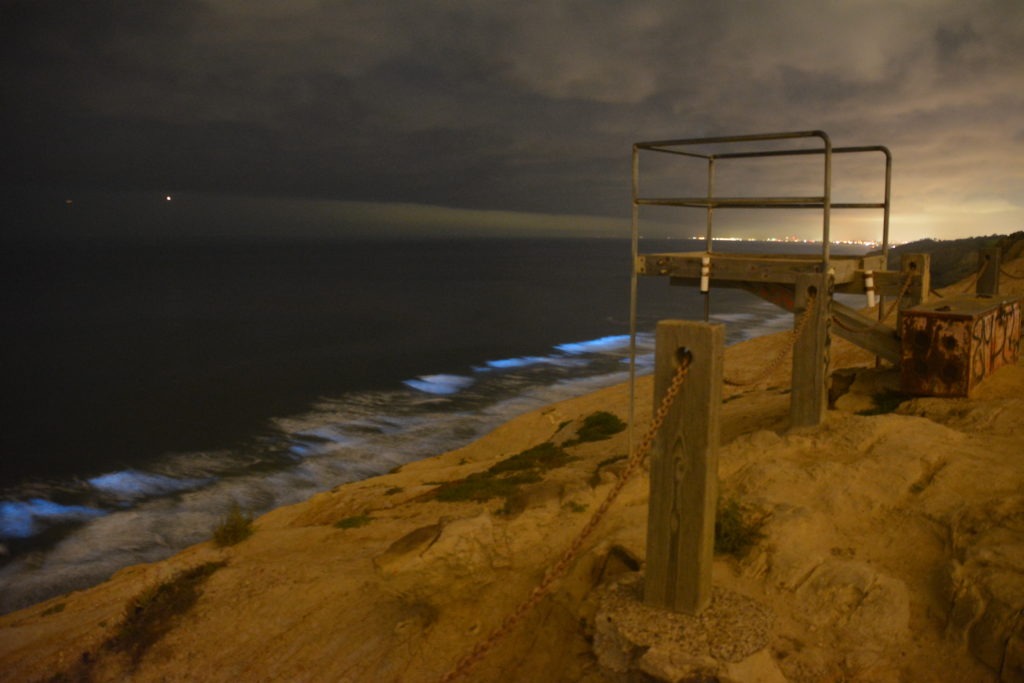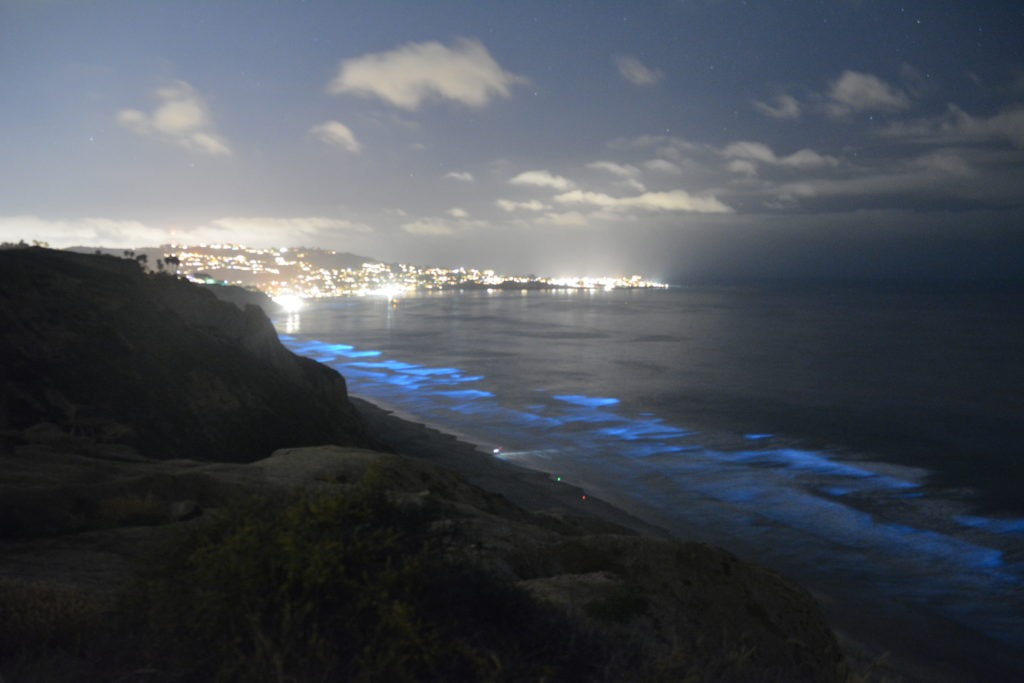How to See Ocean Bioluminescence in San Diego
- May 15, 2020
Every few years in San Diego, crashing ocean waves dazzle blue at nighttime. This has occurred in October 2011, September 2013, May of 2018, and May of 2020. The single-celled algae called dinoflagellates, bloom in the ocean water causing what’s known as the red tide. During the daytime, it appears as a murky and rust-like discoloration of the water.
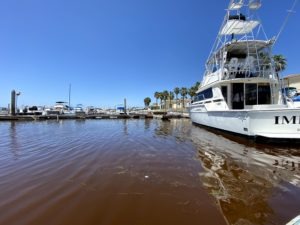
Red Tide in Mission Bay May 2, 2020.
What causes the red tide?
The right combination of heavy rains and the resulting run-off, followed by warm sunny weather, seems to proliferate the dinoflagellates, resulting in a red tide usually lasting several weeks. Some dinoflagellates produce a toxin that can make it unsafe to eat shellfish because mussels, clams. These filter feeders can concentrate these toxins. By blocking out sunlight and reducing oxygen, a red tide can also cause fish to die off. The decomposition of dinoflagellates and dead fish can can cause a foul odor wafting afar as the red tide recedes.
Bioluminescence
Despite water discoloration, toxins concentrated by shellfish and odor, the red tide can bring a sparkly nighttime show. When mechanically disturbed, the dinoflagellates release light which may offer some protection from predation. To the human eye, it creates a short burst of light. The current red tide is created by Lingulodinium polyedra, causing each perturbed organism emits a bluish flash lasting 1/10th of a second. Collectively, this can create a spectacular visual effect with crashing waves, swimming, or surfing in the water.
Seeing it, even when feint
With a strong red tide, it is easy to see bioluminescence. To see the red tide bioluminescence best, make sure there is sufficient darkness, perhaps an hour or more after sunset. Check social media to see where other people have recently noticed bioluminescence. Some areas are better than others, even if a few hundred yards away. If you have eyeglasses or contact lenses for distance vision, wear them! But when the red tide is beginning or declining, the it is harder to detect. If it is feint, you will see it better by adapting your eyes to the darkness for at least 20 minutes. This allows the rod photoreceptors of the retina to calibrate and detect lower levels of light. The largest waves will create the brightest bioluminescence.
Finally, it the bioluminescence is feint, it is often easier to detect with your side vision rather than looking straight ahead. This is because the rod photoreceptors in the eye which are sensitive to detecting lower levels of light involved more for your peripheral vision. This is analogous to why it is often to spot a feint star using your side vision rather than looking right at it.
Photos below where taken by Brian Chou, OD, at Windansea on May 10, 2020, Del Mar on May 12, 2020, and Torrey Pines on May 14, 2020. All images are digitally unaltered.
